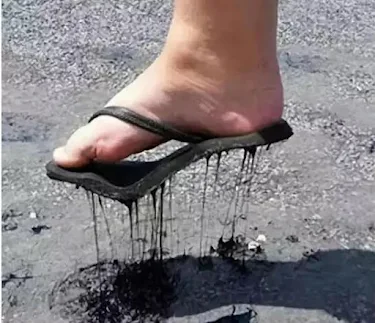Summer's Fury: Decoding the Heatwave Enigma
Summer's heat used to be a predictable dance – a gradual rise in temperatures culminating in long, warm days perfect for outdoor activities. But recent years have seen this dance turn into a fiery tango, with summers becoming increasingly brutal. Let's delve deeper into the factors contributing to this scorching trend.
Beyond the Basics: Unveiling the Layers of Heat
While the Earth's tilt and longer daylight hours during summer are fundamental, human activity is adding a layer of intense heat. Here's a breakdown of the culprits:
- Greenhouse Gas Buildup: The burning of fossil fuels releases greenhouse gases like carbon dioxide and methane. These gases act like a heat-trapping blanket around Earth, causing a gradual rise in global temperatures. This phenomenon, known as the greenhouse effect, is a natural process, but human activity has significantly amplified it.
- Positive Feedback Loops: A warming planet triggers a domino effect. Melting glaciers and ice sheets reduce Earth's albedo – its reflectivity. Darker surfaces absorb more heat, further accelerating warming. Additionally, warmer oceans release more water vapor into the atmosphere, another potent greenhouse gas.
Climate Change's Fiery Grip:
The fingerprints of climate change are evident in the record-breaking summer temperatures. Here's how it intensifies the natural summer heat:
- Heat Waves on Steroids: Heatwaves, periods of abnormally high temperatures, become more frequent and intense due to a warmer baseline temperature. Imagine adding a heatwave on top of an already hot summer day – the result is scorching and dangerous.
- Drought and Desertification: Rising temperatures coupled with changes in precipitation patterns can lead to droughts. Drier land heats up faster, further amplifying the heatwave effect and creating a vicious cycle.
- Ocean Heat Content: Oceans act as a giant heat sink, absorbing a significant portion of the sun's energy. However, with rising temperatures, oceans are reaching their saturation point, releasing trapped heat back into the atmosphere and intensifying summer warmth.
The Scorching Consequences: A Cascade of Impacts
The scorching summers have far-reaching consequences that extend beyond discomfort:
- Public Health Concerns: Extreme heat can lead to heatstroke, dehydration, and exacerbate pre-existing health conditions, especially for vulnerable populations like the elderly and young children.
- Agriculture Under Threat: Crops struggle in the intense heat, leading to reduced yields and potential food insecurity. Changes in precipitation patterns further complicate things, impacting agricultural productivity.
- Ecological Disruption: Rising temperatures disrupt ecosystems. Sensitive species struggle to adapt, while wildfires fueled by dry conditions become more frequent and severe.
A Glimmer of Hope: Mitigating the Scorch
The future of our summers isn't set in stone. Here's what we can do to prevent them from becoming perpetually scorching:
- Shifting to Renewables: Transitioning to renewable energy sources like solar and wind power can drastically reduce greenhouse gas emissions, slowing down the pace of global warming.
- Energy Efficiency: Implementing energy-efficient practices at home and industry-wide can reduce our overall energy consumption and subsequent emissions.
- Sustainable Practices: Promoting sustainable practices like deforestation reduction and carbon capture technologies can help mitigate climate change's effects.
A Call to Action: A Cooler Future Awaits
The fight against scorching summers requires a global effort. We need to hold our leaders accountable for implementing stricter environmental regulations and actively participate in sustainable initiatives. By understanding the science and taking action, we can work towards a future where summers are once again a time for enjoyment, not a season of scorching dread.



Comments
Post a Comment